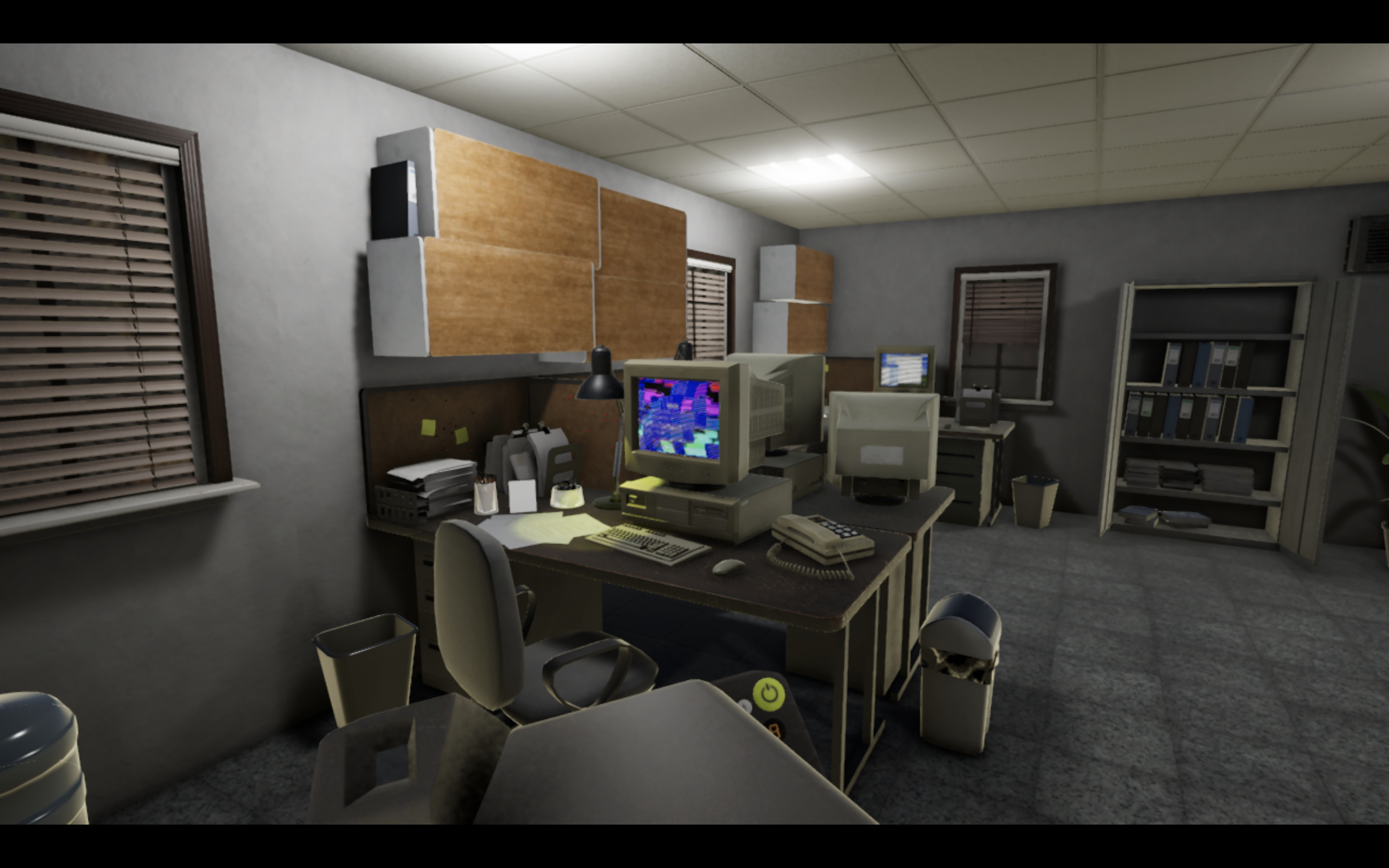Introduction
In my game Quality Assurance, I needed a system to tag objects with colors and later sample that information for gameplay mechanics. Crucially, this information needed to be hidden from the player, so it must be rendered off-screen.
This article describes how I implemented a custom color tag encoding pass in Unity URP, using ScriptableRendererFeature and MaterialPropertyBlock.
Development
Setting Up Per-Category Tags
To encode tags efficiently, I use MaterialPropertyBlock to assign a color representing the object’s category tag:
private void ApplyEncoding(Color tagColor)
{
MaterialPropertyBlock block = new MaterialPropertyBlock();
block.SetColor("_TagColor", tagColor);
foreach (MeshRenderer renderer in meshRenderers)
{
if (renderer != null)
renderer.SetPropertyBlock(block);
}
}Here, each object in a category shares the same tag color. This ensures objects in the same category are encoded consistently during the render pass.
Rendering Tags Off-Screen
To sample tags later, we need to render only the tag information to a render target. This requires:
- A Custom Unlit Shader that outputs only the tag color.
- A Render Feature that overrides the object’s material with this tag material.
Here’s a simple shader for the tag material:
Shader "Unlit/TagColor"
{
Properties
{
_TagColor ("Tag Color", Color) = (0,0,0,1)
}
SubShader
{
Tags { "RenderType"="Opaque" "Queue"="Geometry" }
LOD 100
Pass
{
Name "TagPass"
tags { "LightMode"="SRPDefaultUnlit" }
ZWrite On
Cull Off
Blend Off
HLSLPROGRAM
#pragma vertex vert
#pragma fragment frag
#include "Packages/com.unity.render-pipelines.universal/ShaderLibrary/Core.hlsl"
CBUFFER_START(UnityPerMaterial)
half4 _TagColor;
CBUFFER_END
struct Attributes
{
float4 positionOS : POSITION;
};
struct Varyings
{
float4 positionHCS : SV_POSITION;
};
Varyings vert(Attributes IN)
{
Varyings OUT;
OUT.positionHCS = TransformObjectToHClip(IN.positionOS.xyz);
return OUT;
}
half4 frag(Varyings IN) : SV_Target
{
return _TagColor;
}
ENDHLSL
}
}
}The Render Feature
Next, we create a ScriptableRendererFeature that renders all tagged objects using the tag material:
public override void RecordRenderGraph(RenderGraph renderGraph, ContextContainer frameData)
{
if (tagMaterials == null) return;
var cameraData = frameData.Get<UniversalCameraData>();
var resourceData = frameData.Get<UniversalResourceData>();
var renderingData = frameData.Get<UniversalRenderingData>();
var shaderTags = new[] { new ShaderTagId("UniversalForward"), new ShaderTagId("SRPDefaultUnlit") };
var desc = new RendererListDesc(shaderTags, renderingData.cullResults, cameraData.camera)
{
rendererConfiguration = PerObjectData.None,
renderQueueRange = RenderQueueRange.opaque,
sortingCriteria = SortingCriteria.CommonOpaque,
overrideMaterial = tagMaterials[ctType]
};
using (var builder = renderGraph.AddRasterRenderPass<PassData>("Color Tag Pass", out var passData))
{
passData.rendererList = renderGraph.CreateRendererList(desc);
builder.UseRendererList(passData.rendererList);
builder.SetRenderAttachment(resourceData.activeColorTexture, 0, AccessFlags.Write);
builder.SetRenderFunc((PassData data, RasterGraphContext ctx) =>
{
ctx.cmd.DrawRendererList(data.rendererList);
});
}
}Key points:
- Objects are rendered off-screen using the tag material.
- Each object writes its category or object tag as a color.
Later shaders or scripts can sample this render target for gameplay mechanics like selection, masking, or highlighting.
Using the Render Target
Once rendered, the tag buffer can be used:
- To determine object categories for gameplay logic.
- To create masks for post-processing effects.
- To handle dynamic interactions without exposing information to players.
For instance, you can render it just once per frame to a RenderTexture and immediately disable the pass to avoid showing it in-game.
Limitations
Some caveats with this technique:
- sRGB Color Noise
- Colors like pure RED (1,0,0) may be interpreted differently in sRGB (0.8,0,0).
- This limits the number of unique categories you can safely encode.
- Category Limit (Caused by sRGB Color Noise)
- With 7 colors (RED, BLUE, GREEN, YELLOW, MAGENTA, CYAN, WHITE), you can encode 7 categories.
- You can combine colors for more categories, but this increases complexity and error risk.
- Skybox Interference
- Skyboxes may introduce unwanted pixels in the tag render.
- Workarounds include using a custom opaque skybox or enclosing the level in a sphere.
Conclusion
This system provides a simple, flexible way to encode per-object tags in Unity URP.
While it has limitations in color precision and category count, it’s easy to implement and allows off-screen metadata rendering for gameplay mechanics like selection, masking, and procedural effects.


